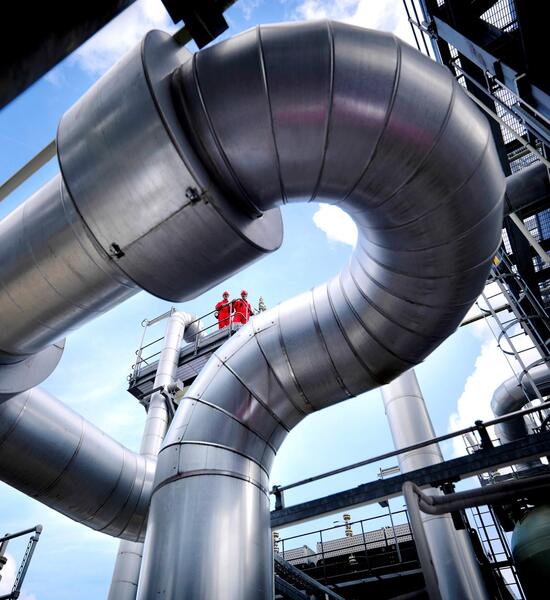Skip to content
Welcome to the BlackRock site for wealth managers
Before you proceed, please take a moment to review and accept the following Terms and Conditions.
This section includes investor type descriptions for professional clients and market counterparties.
Professional client
A Professional Client is either: (i) a ‘deemed’ professional client; (ii) serviced-based professional client; or (iii) an assessed professional Client
(i) Deemed Professional Client
A person is a “deemed” professional client if the person is:
- a supranational organisation whose members are either countries, central banks or national monetary authorities
• a government, government agency, central bank or other national monetary authority of any country or jurisdiction
• a public authority or state investment body
• an Authorised Market Institution, Regulated Exchange or regulated clearing house
• a Regulated Financial Institution or the management company of a regulated pension fund;
• a Collective Investment Fund or a regulated pension fund;
• a corporate body whose shares are listed or admitted to trading on any exchange of an IOCSO member country
• trustee of a trust which has, or had during the previous 12 months, assets of at least $10 million;
• a Single Family Office licensed under the Single Family Office Regulations
• a person classified as a ‘large undertaking’ who meetstwoof the following criteria (i) a balance sheet total of at least $20 million; (ii) a net annual turnover of at least $40 million or (iii) own funds or called up capital of at least $2 million
(ii) Service-based Professional Clients
A person is a ‘serviced-based’ professional client if
- the services provided to the client is in relation to the provision of credit including arranging and/or advising on credit
• the services provided to the client relates to corporate structuring and financing such as advice relating to an acquisition, disposal, structuring, restructuring, financing or refinancing of a corporation or other legal entity i.e. takeovers, mergers and capital raising
(iii) Assessed-based Professional Clients
Assessed-based professional clients can be either (i) individuals; or (ii) undertakings
Individuals
An individual (and associated joint account holders) would be classified as an ‘assessed-based professional client’ if:
- the individual (and primary account holder, if relevant) has net assets of at least $1 million; and
• the individual is, or has been, an employee of an authorised firm or a regulated financial institution in the past two years; or
• the individual can provide evidence which demonstrates that they have sufficient knowledge and experience of relevant markets, products and associated risks
Where there is a joint account in place, the secondary account holder must obtain confirmation in writing that investment decisions relating to the joint account are made for or on behalf of the secondary account holder
Undertakings
Undertakings, which are generally not individuals, would be classified as ‘assessed-based’ professional clients if it:
- has own funds or called up capital of at least $1 million; and
• can evidence that they have sufficient knowledge and experience of relevant markets, products and associated risks
Market counterparties
A Market Counterparty is any person who is either:
- authorised firm;
• regulated financial institution; or
• professional client

The New Infrastructure Blueprint
Societies everywhere are grappling with major, overlapping challenges: Energy security pressures, the transition to a low-carbon economy, changing demographics and urbanization, and realigning supply chains. On the horizon is a digital revolution led by artificial intelligence.
A global opportunity
Taken together, these forces require an enormous amount of new infrastructure, from super batteries and hyperscale data centers to modern logistics hubs and upgraded airports.
We explore the major structural forces driving what’s poised to be a transformational moment in infrastructure investing. And we dive into the various ways capital can invest in the opportunities that we’re seeing today as well as the ones we’re expecting, and how investors can incorporate the asset class into their portfolios.
A changing world
Infrastructure sits at the intersection of the trends transforming the world we live in. It’s the cell towers and fiber internet that power the digitization of business and everyday life. It’s the new land, air and sea transportation facilities that support global supply chains as they reconfigure.
More broadly, it’s the new and upgraded infrastructure across transportation, energy, communication and other services required by a growing and urbanizing world population.
Increase41%
in foreign direct spending that Mexico saw in the first half of 2023
Many companies are seeking to reduce their dependencies on distant producers, shortening supply chains to bring them closer to their end consumers. Mexico is one of the nations that has benefited from this nearshoring trend.
Increase53%
in spending on data center construction is projected from 2022 to 2030
Rapidly advancing technology will require more infrastructure, including new sources of energy.
Increase70%
the percentage of the population is expected to live in urban areas by 2050 vs. just over half today
Urban expansion means enhanced infrastructure across multiple sectors. Among other things, cities require more electricity, expanded telecommunications networks and essential water and sanitation systems.
Source: Ministry of Economy, Mexico, August 9, 2023.
Source: McKinsey analysis, January 2023, citing Synergy Research Group.
Source: World Bank, “Urban Development Overview,” April 3, 2023.

A new era for energy
An increasingly digital and urban population requires more electricity, while nations work to lower carbon emissions and strengthen their energy security.
The financing gap

Governments have traditionally built and maintained infrastructure, but with national debt tripling since the 1970s, it’s unlikely they can fund it alone. The situation requires a strategic pivot. And private investors are meeting this need, led by large pensions and sovereign wealth funds who are attracted by the stability, long duration and inflation-protected potential returns of infrastructure assets.
At the same time, for companies around the world infrastructure is just one of many demands on their resources – and is often not their core business consideration. A private investor can work with corporates, allowing firms to focus on their strategic priorities.
What it means for investors
The infrastructure moment is a rising opportunity for investors. It encompasses a wide range of investment options and sectors, and it can play a variety of roles within a portfolio.

A wide array of opportunities
Private investors have the chance to be at the center of a transformative period for essential infrastructure. The opportunities range from partnering with governments to build physical assets to joint ventures with infrastructure operators, as well as bespoke debt structures.

Diversification in a portfolio
Infrastructure has historically had a relatively low correlation to traditional asset classes due to its idiosyncratic characteristics – it typically doesn’t move in step with economic cycles and its service contracts are often inflation-linked.

Stable investment
As an asset class, infrastructure has traditionally been known for its stability. Many projects involve essential services that remain in demand regardless of economic conditions, and which generate steady, regular and predictable cash flows.
Past performance is not a reliable indicator of current or future results and should not be the sole factor of consideration when selecting a product or strategy.








